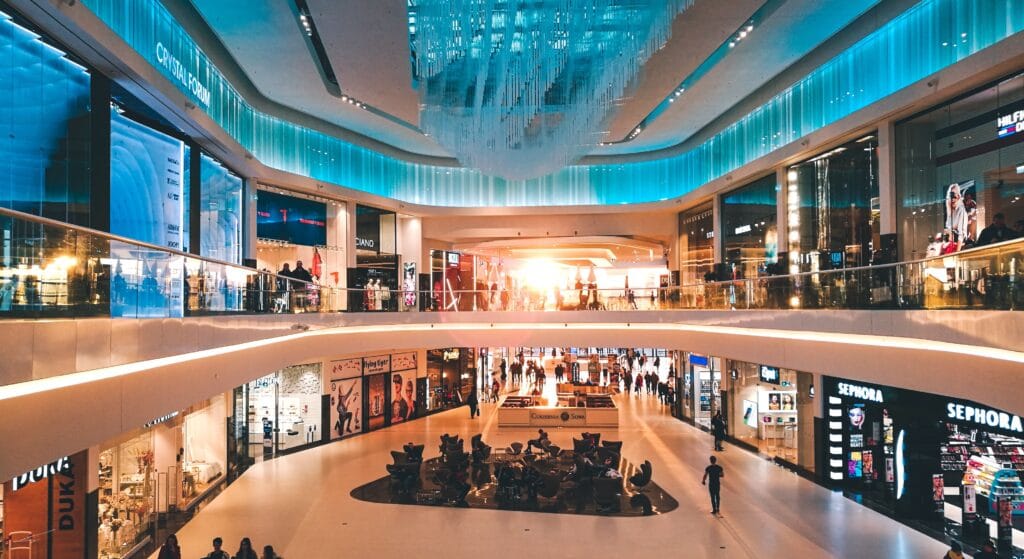
New Retail: from Omni-Channel to Uni-Channel
Technology
Posted 26 May 2020
Online or offline: These should not be the only options for consumers. China, the world’s largest e-commerce market, is already demonstrating what the future of retail will look like with the New Retail model. Above all Alibaba and other Chinese retailers such as 7Fresh, Suning.com, Luckin Coffee, Wanda/Tencent, and RT-Mart, show how the fusion of online and offline is leading to a new shopping experience and a revolution in retail sales.
Online and offline trade is continuing to move closer together. This is made possible by the smartphone, which in Germany, Austria, and Switzerland, has long been an integral part of the customer journey: mobile shopping. In addition, the use of the mobile phone in stationary retail for price comparisons or to obtain product information are particularly popular with the Millennials, the group of 18 to 38-year-olds. Multichannel or omni-channel – i.e. linking the stationary business with the online channel – is the order of the day. China is going one step further and is using digitalization to drive the complete integration of online, offline, logistics and technology into a single value chain. The model known as, New Retail, places customer proximity and convenience above everything else. The focus is on the new consumer, whose wishes must be satisfied quickly, comprehensively, conveniently and at the same time in an entertaining manner, regardless of time and place. “I Want What I Want Where I Want When I Want it” has been elevated to the maxim. The New Retail is therefore less about channels and e-commerce and more about ecosystems and living spaces in which shoppers should feel comfortable. In shopping malls, the supermarket and drugstore on the corner, restaurants and even car dealerships you will find the so-called Retail 2050. Even at farmers’ markets exists QR code shopping via smartphone apps to offer the greatest possible customer orientation.
The New Retail combines AI, logistics, smart stores and experience-oriented retail management for a uni-channel experience. For this form of retail, the question of online or offline is no longer relevant. Instead, both channels merge to offer consumers the greatest possible convenience and new shopping experiences. The term was coined by Jack Ma, founder of the online retail giant Alibaba, which now implements New Retail in hundreds of its supermarkets and stores. The key features of the New Retail at a glance:
The success factors of New Retail include a high degree of customer orientation (customer centricity) and convenience, from product search and advice to discovering and experiencing offers, payment and checkout. Through customization – another pillar of the New Retail – every point of the customer journey is designed as if it was individually developed for the customer. Via social media or other communication channels, the buyer can give his feedback, which in turn serves to improve his future shopping journey (contribution). Social platforms are also used for live streaming – the transmission of real-time live videos to an audience – and are increasingly serving as a new sales channel. Celebrities and influencers showcase clothing or other goods; via fully integrated native e-commerce systems and digital payment solutions, viewers can order them immediately with just one click.
Michael Zakkour, strategic advisor for market entry and growth in China and co-author of “New Retail Born in China Going Global: How Chinese Tech Giants are Changing Global Commerce” says: “In New Retail, the consumer no longer goes to the product, but the product is brought to the consumer by allowing the supplier to research, engage and buy wherever and whenever he wants in a single ecosystem.”
An exemplary application of New Retail could be as follows: Buyers go to a stationary store, use the QR codes of the goods to obtain more detailed product information, e.g. on content and manufacture. They then add the goods to the retailer’s shopping basket using the QR code and pay for them using an online payment system. The items purchased online are delivered to the buyer within 30 minutes. For product categories such as fashion or cosmetics, virtual reality applications or retail entertainment events additionally enrich the shopping experience. Using augmented reality, for example, different lipstick colours can be tested virtually on a display and even clothes can be tried on.
The principle of “See now, by now” is supplemented by prompt delivery, because the supply chain and logistics in particular play an important role in this new form of retail. On the last Singles’ Day, the highest-turnover shopping event in China, Alibaba topped itself: after just 68 seconds, the Internet giant broke through the sales barrier of one billion dollars. Within 24 hours, sales on Alibaba’s trading platform reached 38.4 billion dollars. Compared to last year’s Singles’ Day, this corresponded to an increase in sales of 26 percent. In addition to the new sales record, the total number of delivery orders also reached a new high: 1,292 billion orders were placed – a figure that requires outstanding processing power of the Alibaba platform and highly efficient logistics. But a smooth supply chain must be guaranteed not only to the consumer, but also in other directions. In line with the uni-channel, we are talking here about uni-logistics, which means the ability to deliver products from anywhere to anywhere at any time.
However, the concept of New Retail only works if consumers share their data. In China, where individual data protection is far removed from European standards, this is not an obstacle – certainly one reason why this model has its origins there. So-called super apps conceal entire ecosystems behind just one app. WeChat, for example, combines more than two million mini-programs from other providers in the background, including offers from public authorities. The advantage is that you don’t have to download different apps for different applications and log in again each time. However, the super apps of the Internet giants in which consumers move around are usually associated with restrictions, which is why they are called “walled gardens”: anyone who chooses the Tencent World and WeChat has no access to Alibaba’s online shopping platform Taobao and vice versa.
While in Germany the focus is on the question of who will win the race – stationary trade or online trade, China has embarked on a completely new path. Online and offline are not in competition with each other, but have merged. More people are buying more and more products in more places. In 2018, almost 30 percent of retail sales in China were generated online. According to the forecast, this share will amount to 36.6 percent in 2019 and will exceed the 50 percent mark for the first time in 2021. Even if the figures would be alarming over here, they do not mean the end of stationary trade in China, because this goes hand in hand with online trade. By using artificial intelligence, the concept underlying New Retail is constantly being further developed. Here in Germany, but also in Austria and Switzerland, this retail concept will not be applicable 1:1 for data protection reasons alone. However, one of the lessons learned in China is how to create a better shopping experience for consumers and how the joy of experimentation helps to break new ground.
Helen Mack
Account Director at HBI Helga Bailey GmbH – International PR & MarCom

After a short excursion into marketing, Helen Mack has been serving HBI customers in the B2B sector for more than 15 years. Her current focus is on the exciting topics of sustainability, retail technology and logistics. In addition to consulting, her present tasks include text creation and event organization. Always in focus: how to increase the market presence and success of HBI’s clients.